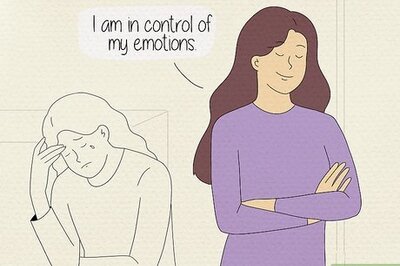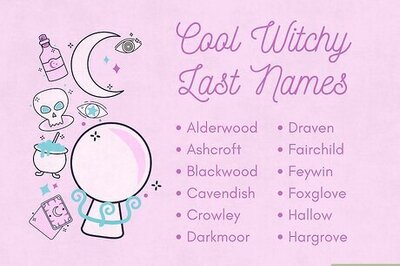
views
New Delhi: Rebeca was chatting online with her friend when a stranger pinged the 16-year-old student. They got chatting and after a few sessions, the man soon befriended her. As both her parents are busy executives, they have little time for Rebeca and she was happy to get a new friend and started sharing personal information.
The day the man proposed a meeting, Rebeca was thrilled. He promised to take her to take to a movie. Next day Rebeca met the man and got carried away.
This story is fictional, but the situation is too real. A new research study by Teenage Research Unlimited (TRU) reveals 14 per cent of teens have had face-to-face meetings with people they have met on the Internet.
Children's Advocate John Walsh, the National Center for Missing & Exploited Children, and Cox Communications announce results of teen Internet survey and tools to help parents and guardians take charge of web use in the home.
New research by Cox Communications in partnership with the National Center for Missing & Exploited Children(R) (NCMEC) reveals teens are engaging in risky behavior online but that parents and guardians can have an impact on that behavior.
One-third of teens surveyed say they are considering meeting face-to-face with someone they've met from the Internet and 14 per cent say they've already had such an encounter.
While many teens are sharing personal information online and putting themselves in potentially harmful situations, the survey results show that when parents and guardians talk to their teens about Internet safety, their exposure to potential threats decline and they make safer online decisions.
The key findings of the study points out that teens continue to be active online but some still engage in risky behavior.
In their adolescence (13 to 17 year age group), teenagers develop a communication gap with their parents and as high as 61 per cent of teenagers post personal profile on sites such as MySpace, Friendster, or Xanga. Half of them also post their pictures online.
Older teens (16- to 17-year-olds) and girls represent the majority of youths who use the Internet for social interaction, meeting friends, and networking. However, many have also been exposed to the accompanying potential risks.
13- to 15-year-olds are less adventurous and 9 per cent of them actually met face-to-face with a person they had known only through the Internet. This figure is 22 per cent in case of 16- to 17-year-olds who like social interaction.
Although 30 per cent have considered meeting someone they have only communicated with online, only 14 per cent gather courage to actually meet.
PAGE_BREAK
Communicating with strangers online is widespread and as high as 71 per cent reported receiving messages online from someone they don't know.
Intentions of those strangers are often mischievous, as 45 per cent have been asked for personal information by someone they don't know.
More concerning fact is that when teens receive messages online from someone they don't know, 40 per cent usually reply to and chat with that person, which is risky.
Parents often remain unaware of such interactions due to communication gap and only 18 per cent said they tell a parent or guardian that they received a message from someone they don't know.
Unaware of the intentions of such strangers, 20 per cent teens consider their online behavior to be safe. Moreover 37 per cent teenagers of 13- to 17-year age groups are not very concerned about misuse of their personal information.
Parents and guardians have major role to play to stop the menace as only they can impact their teen's online experience through communication.
Communication gap is a real problem as 33 per cent of 13- to 17-year-olds reported that their parents or guardians know "very little" or "nothing" about what they do on the Internet while 48 per cent of 16- to 17-year-olds said their parents or guardians know "very little" or "nothing" about their online activities.
Fully 22 per cent of those surveyed reported their parents or guardians have never discussed Internet safety with them.
On the other hand, 36 per cent of youth - girls and younger teens, most notably - said their parents or guardians have talked to them "a lot" about online safety, and 70 per cent said their parents or guardians have discussed the subject with them during the past year.
Fewer teens whose parents and guardians have talked to them "a lot" about online safety have an instant messaging (IM) name or pictures of themselves on the Internet, compared to kids whose parents or guardians haven't talked to them at all.
More teens who've talked to parents or guardians ignore messages from unfamiliar people, refuse to reply or chat, block unknown senders, and report these occurrences to trusted adults.
So, teen Internet use and attitudes about safety present potential risks, but they also reveal opportunities for education and highlight a critical role for watchful parents and guardians.


















Comments
0 comment